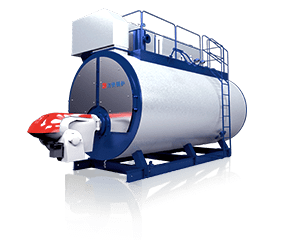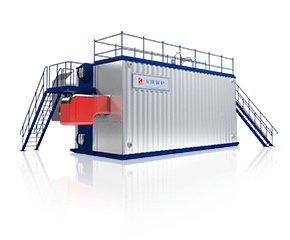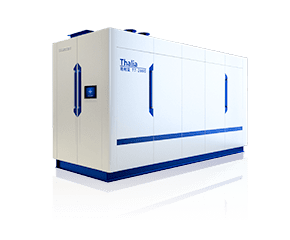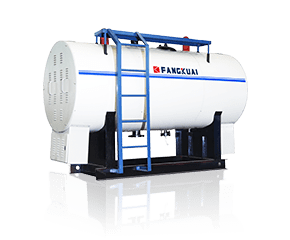From the current form, the realization of low-nitrogen combustion by
gas boilers is the general trend of social development in my country, and it is also an important measure to reduce the emission of air pollutants.
The existing low-nitrogen combustion technology of gas-fired low-nitrogen boilers mainly focuses on how to reduce the combustion temperature and reduce the generation of thermal nitrogen oxides (NOx). The main technologies include staged combustion, premixed combustion, and flue gas recirculation.
1. Fuel staged combustion/air staged combustion
The generation amount of thermal NOx largely depends on the combustion temperature. The combustion temperature reaches the highest value when the equivalence ratio is 1, and when the combustion is carried out in the case of lean or rich combustion, the combustion temperature will drop a lot. Using this principle, staged combustion technology is introduced.
The first stage of air staged combustion is fuel-rich combustion. Excess air is added to the second stage for lean combustion. Air cooling is added between the two stages to ensure that the combustion temperature is not too high. Fuel staged combustion is the opposite of air staged combustion. The first stage is fuel-lean combustion, and fuel is added in the second stage to make the equivalence ratio reach the required value. The combination of these two methods will keep the excess air coefficient of the entire system at a constant value, which is the currently commonly used low-nitrogen combustion control technology.
2. Premixed combustion technology
Premixed combustion refers to the complete mixing of fuel and oxidant at the molecular level before the mixture ignites. For the control of NOx generation, the advantage of this technology is that the combustion temperature can be controlled through full control of the equivalence ratio, thereby reducing the thermal NOx generation rate. In some cases, premixed combustion and partial premixed combustion are comparable to non-premixed Combustion reduces NOx generation by 85%-90%. In addition, full premixing also reduces the reduction in NOx generation control due to excess air ratio non-uniformity.
3. External flue gas recirculation and internal flue gas recirculation technology
The reduction of the combustion temperature can be achieved by adding flue gas to the flame area, and the added flue gas absorbs heat and thus reduces the combustion temperature. By adding the combustion products of the flue gas into the combustion area, not only the combustion temperature is lowered, but also the generation of NOx is reduced; at the same time, the added flue gas reduces the partial pressure of oxygen, which will weaken the process of generating thermal NOx from oxygen and nitrogen, thereby Reduce NOx generation. According to the different application principles, there are two application modes of flue gas recirculation, namely external flue gas recirculation and internal flue gas recirculation.
Judging from the current boiler market, most manufacturers choose to use premixed combustion technology and flue gas recirculation technology to achieve low-nitrogen combustion of gas boilers. of. Fangkuai Boiler is a well-known manufacturer of low-nitrogen gas boilers. Many of its low-nitrogen series products have been widely recognized by users after being put into the market. It is a pioneer brand of clean and environmentally friendly gas boilers!





